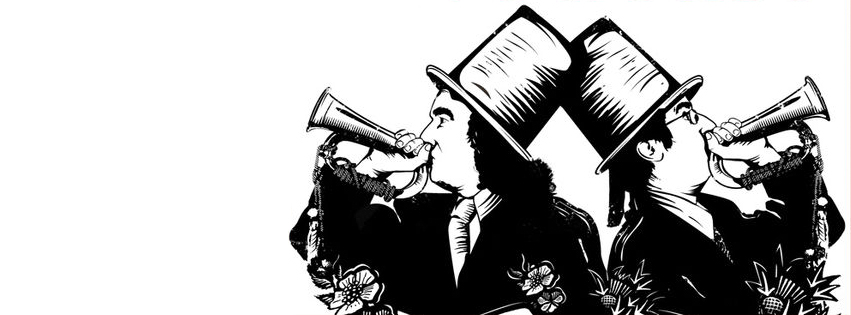Active Learning in Physics by Jeff Gore | Why I Teach by Eric Lander | One concept at 5 levels by Bobby Kasthuri | You Can Learn Anything by Khan Academy | Materials for Nurturing Scientists by Uri Alon | Translate Jargon by Alan Alda | Kurzgesagt | 3blue1brown | Better Explained | The Feynman Lectures on Physics | The Innovative Genomics Institute’s Glossary | Cell Signaling’s interactive Cellular Landscapes | ChemInfoGraphic | NileRed by Nigel Braun
“Memorization is a frontage road: It runs parallel to the best parts of learning, never intersecting. It’s a detour around all the action, a way of knowing without learning, of answering without understanding.”
(Ben Orlin)
“So how do you go about teaching them something new? By mixing what they know with what they don’t know. Then, when they see vaguely in their fog something they recognize, they think, ‘Ah, I know that.’ And then it’s just one more step to, ‘Ah, I know the whole thing.’ And their mind thrusts forward into the unknown and they begin to recognize what they didn’t know before and they increase their powers of understanding.”
(From Life With Picasso by Francoise Gilot and Carlton Lake)
“Your brain craves novelty. It’s always searching, scanning, waiting for something unusual. It was built that way, and it helps you stay alive. Today, you’re less likely to be a tiger snack. But your brain’s still looking. You just never know. So what does your brain do with all the routine, ordinary, normal things you encounter? Everything it can to stop them from interfering with the brain’s real job- recording things that matter. It doesn’t bother saving the boring things; they never make it past the “this is obviously not important” filter. How does your brain know what’s important? Suppose you’re out for a day hike and a tiger jumps in front of you, what happens inside your head? Neurons fire. Emotions crank up. Chemicals surge. And that’s how your brain knows this must be important, don’t forget it!
But imaging you’re at home, or in a library. It’s a safe, warm, tiger-free zone. You’re studying. Getting ready for an exam. Or trying to learn some tough technical topic your boss thinks will take a week, ten days at most. Just one problem. Your brain’s trying to do you a big favor. It’s trying to make sure that this obviously non-important content doesn’t clutter up scarce resources. Resources that are better spent storing the really big things. Like tigers. Like the danger of fire. Like how you should never again snowboard in shorts. And there’s simply no way to tell your brain, “Hey brain, thank you very much, but no matter how dull this books, and how little I’m registering on the emotional richer scale right now, I really do want you to keep this stuff around.”
(from Head First Java by Kathy Sierra and Bert Bates)
“Science is not too hard for you to understand. That was Jackie Novatt’s attitude during every tour she gave at Cold Spring Harbor Laboratory, where she herself was a researcher, and it showed… Novatt proclaims, ‘I firmly believe science doesn’t have to be hard and it doesn’t have to be scary.’ Her story shows how that determination can pay off.
[…] “Novatt explained what causes spinal muscular atrophy (SMA) and how the drug addresses this, just as she normally would. The problem is with a process called RNA splicing, which is the focus of all of the work in Krainer Lab. She compares this complex genetic phenomenon to editing a word in different ways. During RNA splicing, the information in genes gets rearranged and repurposed in a way that’s like editing a word. She liked to use “cataloging” as an example. Chop off the “ing” and you get a related word, “catalog.” Or, “keep chopping and you get ‘cat,’ which is a furry animal with whiskers that makes me sneeze,” she adds with a laugh. But in SMA, the editing process of RNA splicing yields a nonsense word, in the same way you can get “logi” from “cataloging” if you cut in the right spots.”
(from Welcome to the real world of science, I’ll be your guide by Andrea Alfano)
“Children, of course, are rigorous scientists. Toddlers observing something unusual respond with an attitude every researcher strives to maintain: open to many interpretations until they have decisive evidence for one… One experiment at a time, children test and refine their understanding of the world.”
(from Sundays are the Altar of Science by Thomas Hooven)
“The ultimate test of your knowledge is your capacity to convey it to another.”
(Richard Feynman)
“… Effective communication is not throwing facts at an audience or “dumbing down” a message. Rather, effective communication is defined by making an effort to know and comprehend the unique aspects of your audience, understanding that they may be approaching this topic from a different place than you, and being prepared to listen and reflect. In essence, it means taking the time to build trust, and that is hard work, but ultimately necessary and fulfilling. The effort spent articulating how science transforms our lives catalyzes wonder, reassurance, and hope for a better future.”
(from Learning more about science communication and engagement by Abbie Groff)
“… Science can’t be studied or taught from the confines of an ivory tower. Science needs to be studied holistically and taught with compassion and empathy.”
(from Science can’t be taught in a vacuum by David R. Wessner)
“You have many opportunities to make yourself sound smart; you have fewer to make others feel smart.”
(Cole Trapnell)
“In this lab, mistakes are: expected, respected, inspected, and corrected.”
